There were a bunch of Greater Earless Lizards, Cophosaurus texanus, hanging around the cabins.
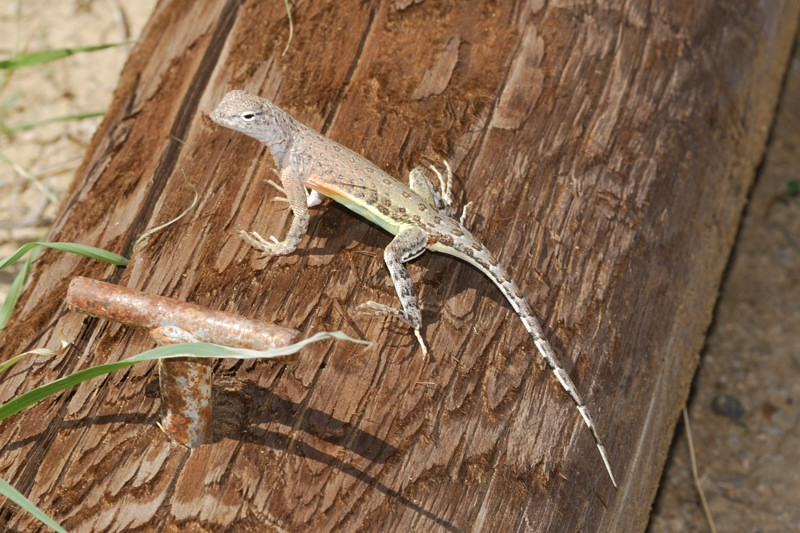
Another commonly seen lizard in the rocks was Big Bend Canyon Lizard, Sceloporus merriami annulatus. You might have noticed this is the second subspecies of Sceloporus merriami we have seen so far. The first was mentioned in Part I, but there is still another one to go. I don't typically throw too much weight into subspecies, (and these are actually a pretty good example of why) but I do tend to keep tract of them when I travel. If there are any taxonomic changes later, having a decent record of what exactly was seen and where may be useful.
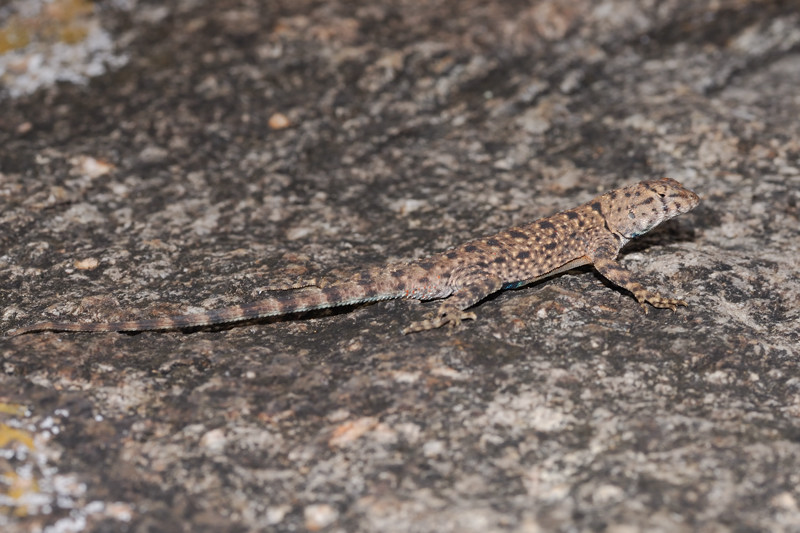
Carl working his way up the hillside.
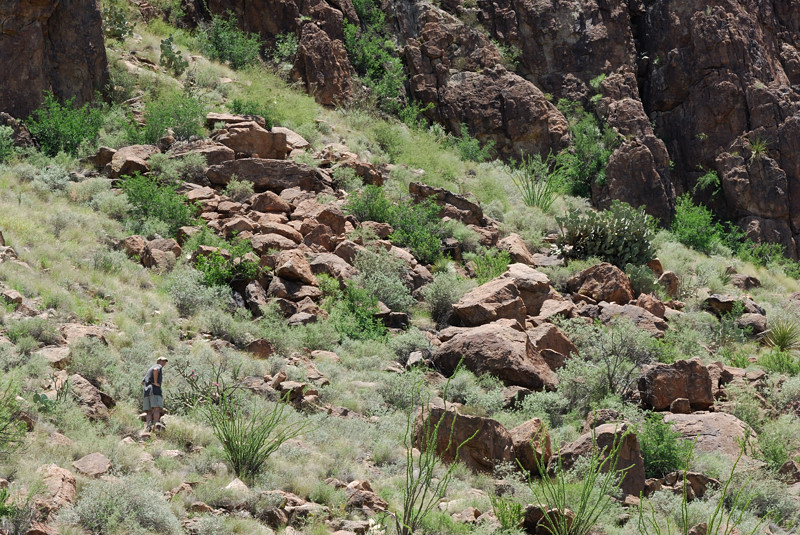
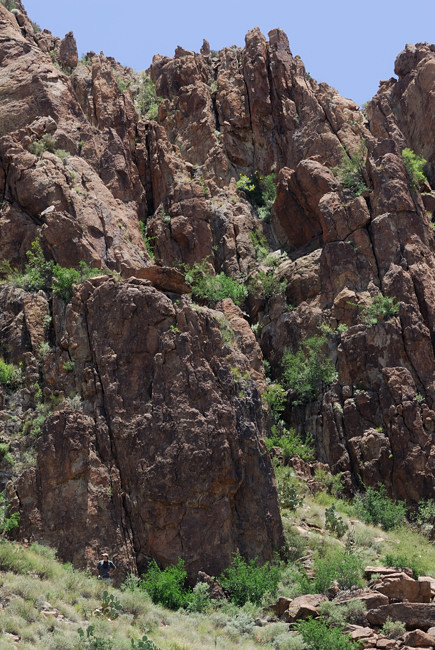
We managed to find two examples of Big Bend Tree Lizard, Urosaurus ornatus schmidti.
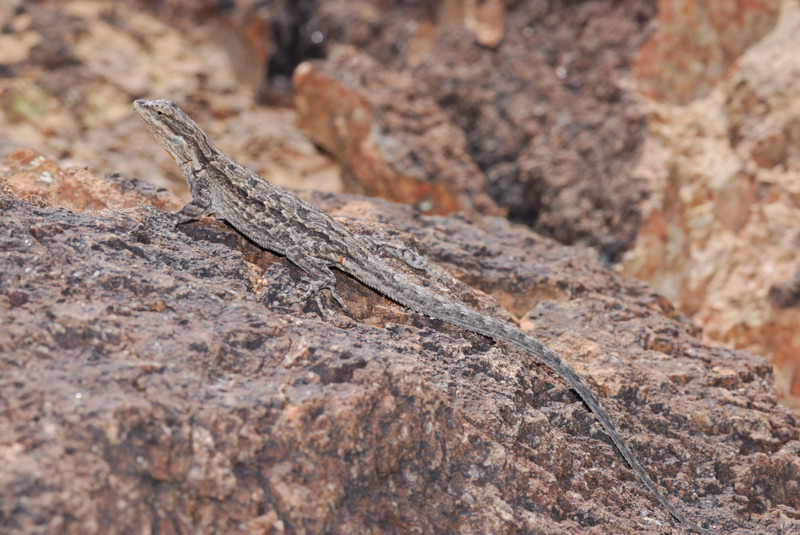
The hike on the way back down provided a nice view of the motel.
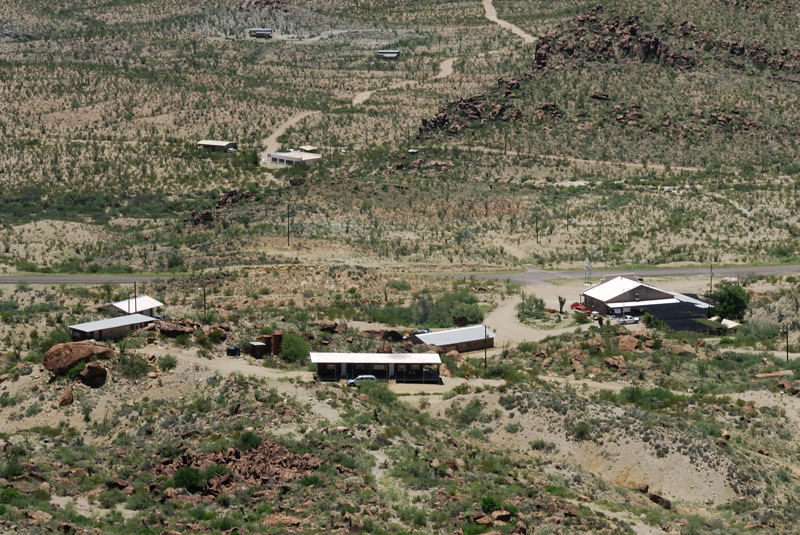
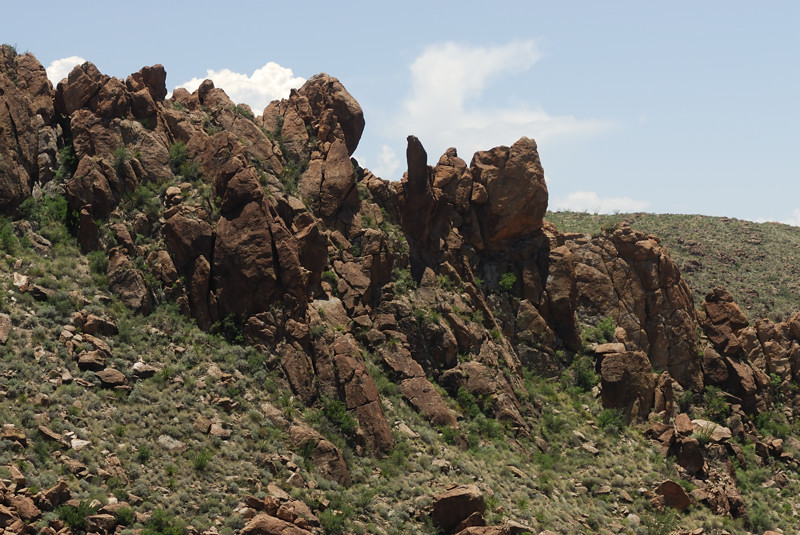
Later that night, Bob and Brad grilled up some tasty chicken and we enjoyed a beer while waiting for dusk to fall. There were a few whiptails running around between the cabins. I believe this to be a Big Bend Spotted Whiptail, Aspidoscelis scalaris septemvittata.
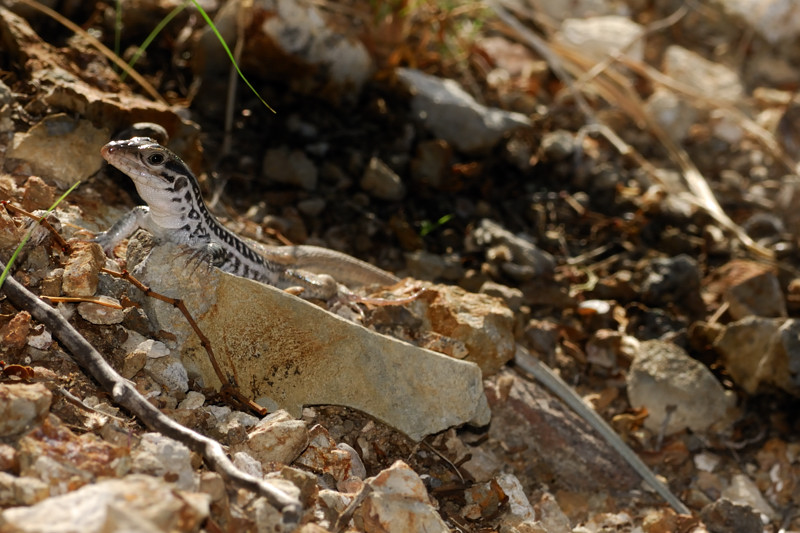
More earless lizards were seen before we headed out for the night.
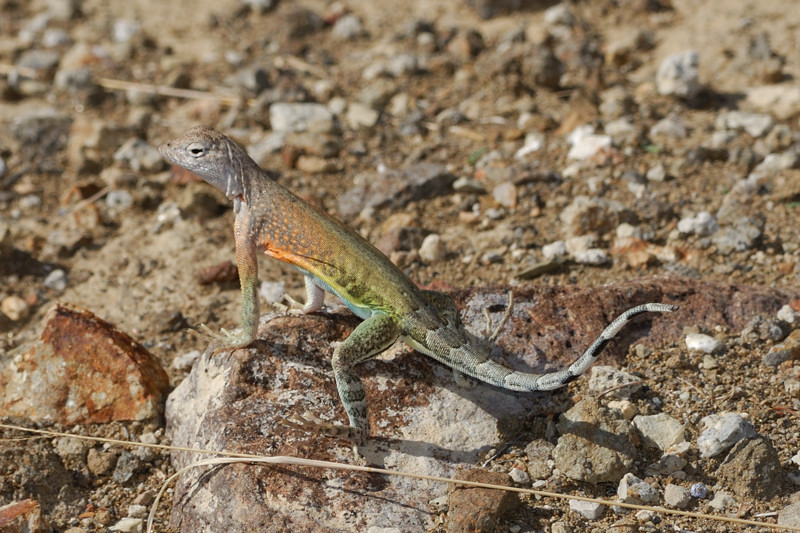
We searched for a while seeing more of the usual suspects and then decided to try a different area a little earlier than normal. This provided us with a couple of new viewing opportunities. First was this Trans-Pecos Ratsnake seen in situ about 30 feet up a rock cut.
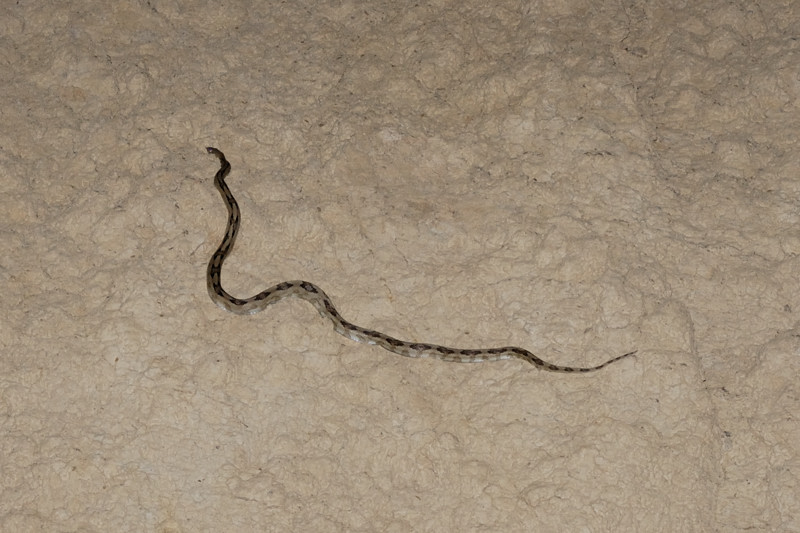
Unfortunately, a small ways away we spotted this DOR Grey-Banded Kingsnake, Lampropeltis alterna.
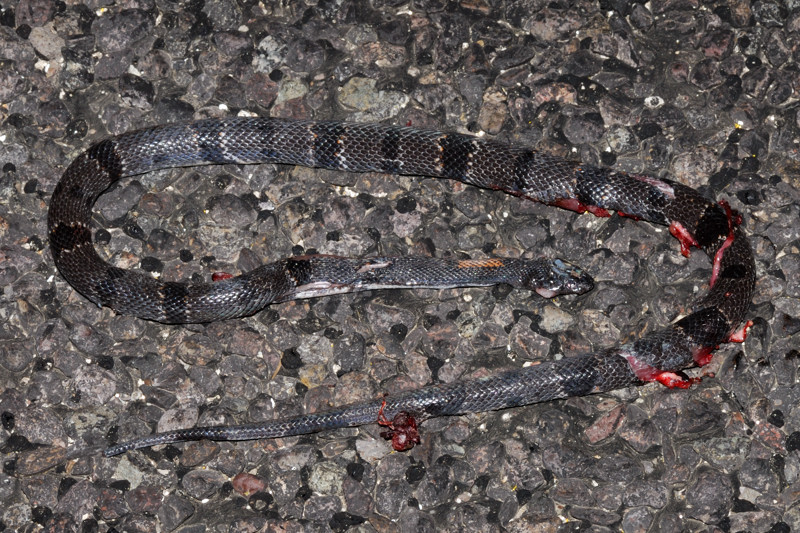
We managed to spot a nice looking blacktail in situ on a cut, waiting for a meal around 0400.
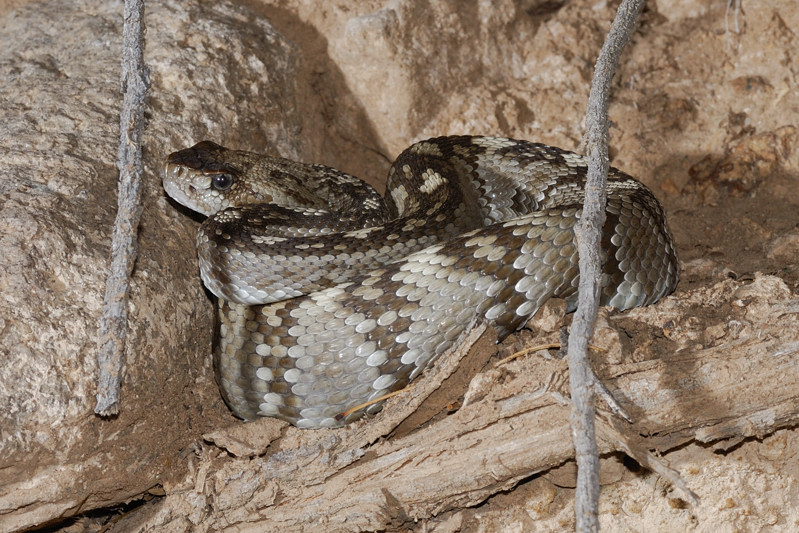
Despite good luck with a variety of animals we decided to move on to a different area. We didn't come all this way just to see an alterna (although it would be nice). We wanted to see much of West Texas, visit the the different towns, and the different areas herps are known from.
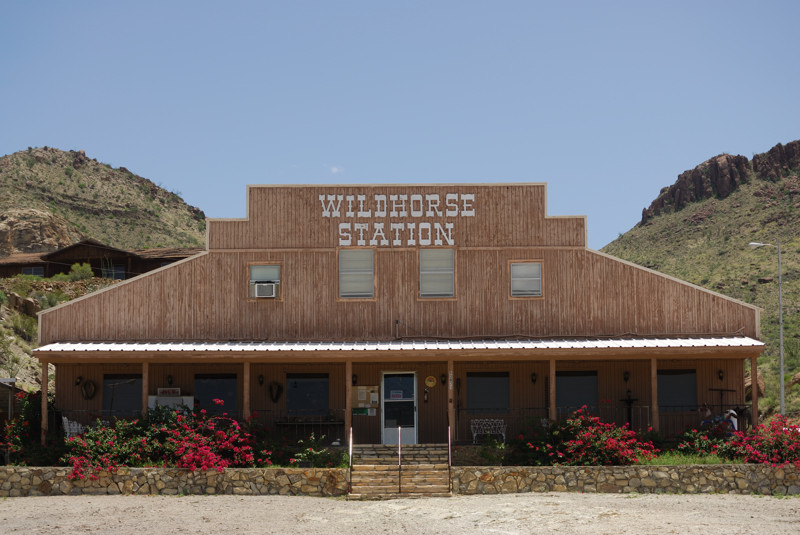
We chose to drive back through Big Bend National Park for the hope of stuff on the road and to take in the scenery. One drawback to this is the hands off mentality of national parks. We had just paid our fee at the initial station to see a gorgeous red coachwhip crawl out on the road about 15 yards in front of our car. We didn't have many options other than to wave goodbye as it took off into the brush. I managed a quick shot of red in a see of grass...
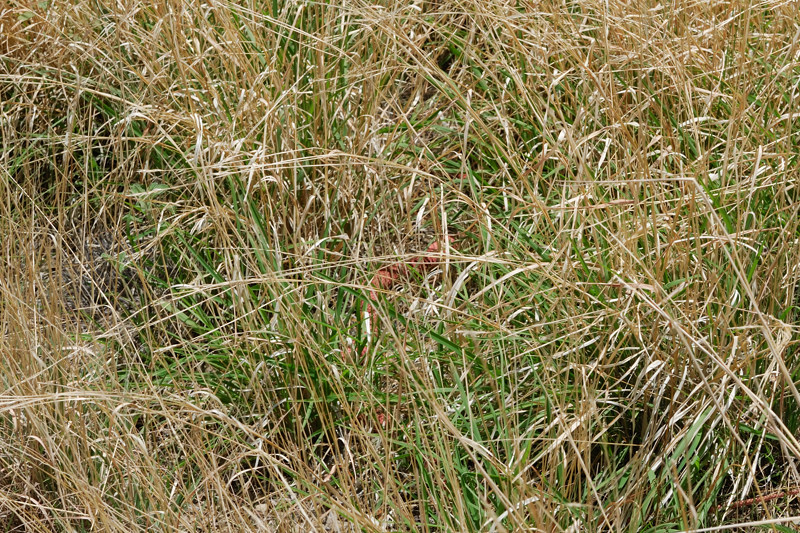
Any cactus experts out there for some help on IDs?
Ocotillo
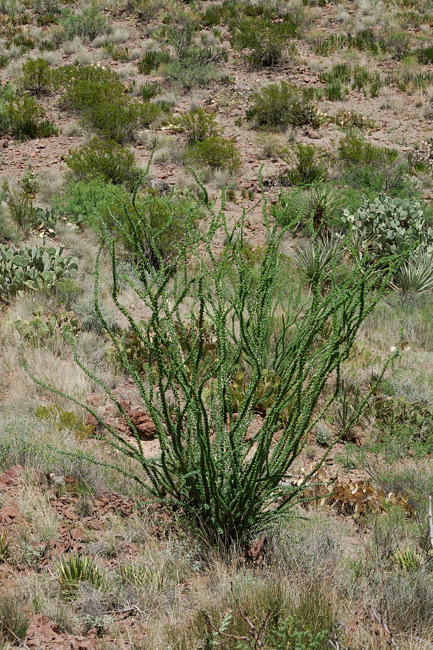
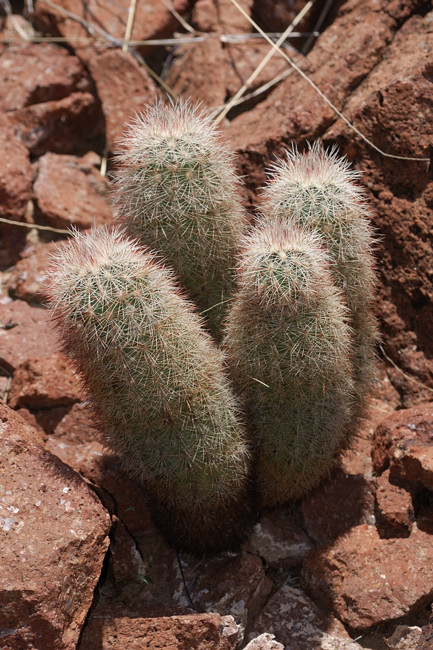
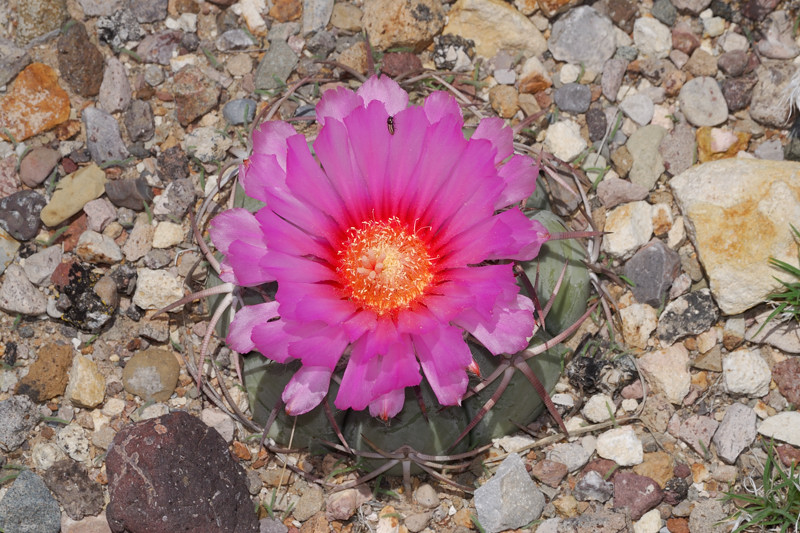
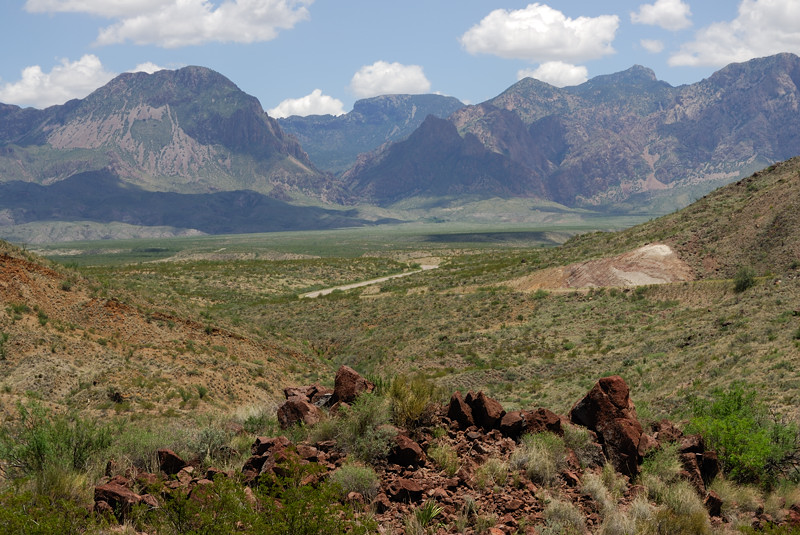
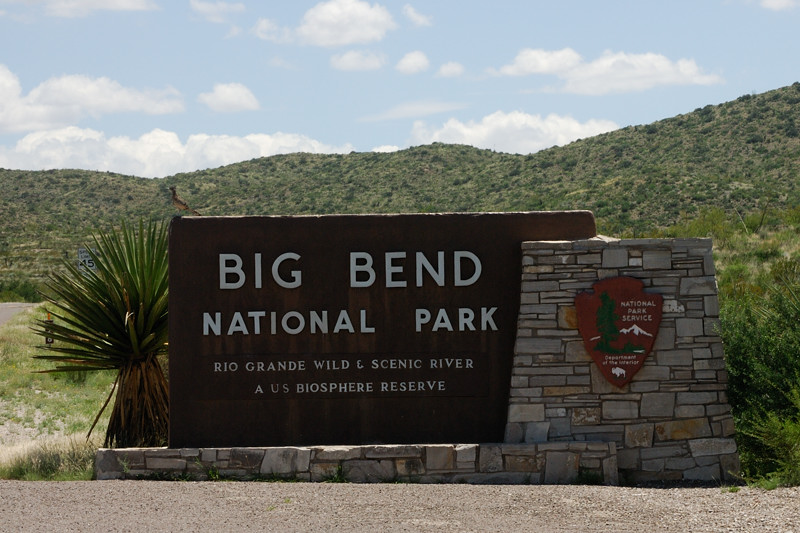
And a final goodbye to Big Bend National Park. I would love to return again, hopefully soon!
But more to come from West Texas...
Click here for West Texas Part I, Part II, Part III and Part IV.


Your cacti are as follows: Ocotillo (Fouqueria splendens), Texas Rainbow Hedgehog (Echinocereus dasyacanthus), and Eagle Claws, or Blue Barrel (Echinocactus horizonthalonius).
ReplyDelete